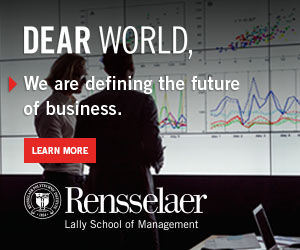Startups are created in environments where clarity is scarce and assumptions shift quickly. They do not wait for market stability or perfect timing; instead, they act during periods when information is incomplete and future conditions remain unclear. This reality places them in a position where every move carries weight. Analysts often compare this climate of incomplete signals to unpredictable environments such as Gransino Casino, where outcomes depend on fast-changing variables. The analogy is not literal but highlights how both spaces require decisions made before full certainty exists.
Young companies embrace this instability because innovation cannot emerge from predictable circumstances. To build something new, founders must move ahead of validation, acting on intuition supported by limited early data. This approach turns uncertainty into a structural element of their strategy. Rather than avoid risk, startups incorporate it into their development model, knowing that transformation rarely grows from stable ground.
Why Startups Accept Conditions Others Avoid
Established companies rely on confirmation, large datasets and cautious progression. Startups lack these advantages and therefore operate under a different logic. If they wait for certainty, they lose the advantage of speed. If they adhere to safe paths, they no longer innovate. Survival demands bold decisions that reshape incomplete ideas into tangible products before competitors reach the same insights.
High-risk choices allow them to open markets rather than follow them. Entering untested spaces offers room to define standards, influence consumer expectations and shape categories that mature later. The willingness to advance without total clarity mirrors patterns observed in decision-making systems like Gransino Casino, where timing and adaptability determine outcomes. Startups depend on a similar interplay between opportunity and volatility.
Their strategies reflect the understanding that progress cannot emerge from hesitation. The future rewards those willing to move while the landscape is still uncertain.
The Midpoint Where Everything Becomes Unstable
Every startup eventually reaches a stage when early belief must be translated into measurable progress. This midpoint is the most fragile part of the journey. Momentum slows, resources tighten and the initial idea collides with operational challenges. Revenue patterns fluctuate, user interest may shift unexpectedly and technological limits become more visible.
This phase resembles navigating an environment where signals appear meaningful but do not guarantee definitive outcomes. Observers sometimes use comparisons to the shifting logic seen in platforms like https://gransino-casino.com to describe this uncertainty. Strategic decisions at this point are based on partial information, not complete analysis. The company must adapt quickly, refining features, reworking pricing or altering market focus while ensuring the original concept does not lose its identity.
Success depends on a company’s ability to adjust direction without abandoning its core. The midpoint tests whether a startup can transform early traction into sustainable growth despite conditions that change faster than predictions can track.
Innovation Driven by Limitations
Limitations shape the creativity of startups more than ambition alone. With small teams and finite budgets, they cannot afford unnecessary complexity. They must reduce ideas to their essential components and build only what carries real value. Constraints accelerate innovation by forcing clarity and eliminating waste. This environment encourages experimentation because the cost of inaction is often higher than the cost of trying.
The absence of rigid structures encourages unconventional solutions. Startups do not have departments separated by tradition or processes burdened by hierarchy. Ideas move fluidly across roles. Decisions are made quickly. Adjustments occur in hours rather than quarters. This internal dynamic mirrors adaptive patterns seen in unpredictable systems like Gransino Casino, where each decision becomes part of a broader sequence that takes shape in real time.
Constraints, rather than restricting creativity, often make innovation possible.
External Pressures That Increase Uncertainty
Even the most resilient startups face external pressures that magnify internal risk. Technologies evolve faster than early-stage companies can predict. Regulatory shifts disrupt plans that seemed stable a month earlier. Funding conditions fluctuate with global markets rather than individual performance. Cultural trends alter consumer expectations without notice.
Startups cannot pause during these shifts. They must continue advancing their products and refining strategies while the environment around them transforms. This creates a constant tension between planning and adaptation. Companies learn to accept that the future they build toward may change before they reach it. In this sense, volatility becomes both a constraint and an advantage, shaping their ability to act when larger organizations move too slowly.
Why High-Risk Startups Matter for the Broader Economy
Despite the vulnerability built into their structure, startups remain essential to technological progress. They take on projects that established firms view as too speculative. They test ideas that lack existing markets. They push new technologies beyond the stage where they are merely promising and into spaces where they become practical.
Breakthroughs in energy, artificial intelligence, biotechnology and digital infrastructure often begin inside companies operating under significant uncertainty. Their work introduces alternatives that challenge the assumptions of larger players. Their willingness to advance without complete information accelerates industry-wide change.
This strategic posture resembles the mindset used to interpret dynamic systems like Gransino Casino, where outcomes are influenced by timing, context and rapid response. Startups succeed by understanding complexity, not by avoiding it.
Risk and Responsibility in Startup Growth
While risk is essential, it must be managed. Startups collapse when ambition outpaces capacity or when rapid scaling creates vulnerabilities. Ethical considerations also arise when products touch sensitive areas such as data security, user privacy or community impact.
Responsible innovation requires discipline. It involves acknowledging that long-term viability depends not only on speed but on the ability to recognize when direction must shift. The best startups balance bold decisions with careful evaluation, ensuring that the pursuit of growth does not undermine stability.
Innovation at the Edge of the Unknown
As global markets evolve, startups will continue to define how new technologies emerge. Fields such as quantum computing, automation, climate tech and advanced materials demand exploration before certainty exists. The companies that step into these spaces accept that risk is unavoidable, but they also understand that it is the engine of progress.
Innovation remains a wager on what the future might look like. Startups continue to operate where the outcome is unclear, where signals are incomplete and where the reward for success reshapes entire industries. The metaphorical parallels to fast-changing environments like Gransino Casino reflect a larger truth: progress is built by those willing to act before the path is fully visible, and the future belongs to those who can turn uncertainty into direction.































